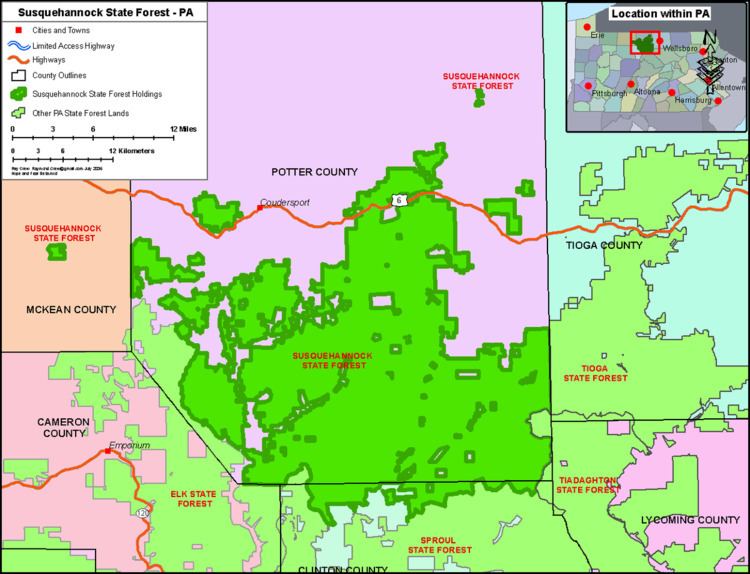Phone +1 814-274-3600 | ||
 | ||
Hours Open today · 10AM–4PMSaturday10AM–4PMSunday10AM–4PMMonday8AM–4PMTuesday8AM–4PMWednesday8AM–4PMThursday8AM–4PMFriday8AM–4PMSuggest an edit | ||
Susquehannock state forest atv trail
Susquehannock State Forest is a Pennsylvania state forest in Pennsylvania Bureau of Forestry District #15. The main office is located in Coudersport in Potter County, Pennsylvania in the United States.
Contents
- Susquehannock state forest atv trail
- Atv ride potter county pa pt 2 susquehannock state forest
- History
- Hammersley Wild Area
- Nearby state parks
- Neighboring state forest districts
- References
Susquehannock State Forest is located chiefly in Potter County, with small tracts in McKean and Clinton Counties. The forest is named for the Susquehannocks, a Native American tribe who once lived in the Susquehanna River basin.
Atv ride potter county pa pt 2 susquehannock state forest
History
Susquehannock State Forest was formed as a direct result of the depletion of the forests of Pennsylvania that took place during the mid-to-late 19th century. American conservationists like Dr. Joseph Rothrock became concerned that the forests would not regrow if they were not managed properly. Lumber and Iron companies had harvested the old-growth forests for various reasons. They clear cut the forests and left behind nothing but dried tree tops and rotting stumps. The situation was exacerbated as often sparks of passing steam locomotives ignited wildfires that prevented the formation of second growth forests.
The conservationists feared that the forest would never regrow if there was not a change in the philosophy of forest management—such as those measures which had been for some years making news in Europe and India. Knowledge of Forest management practices among the well informed, then being long in place in France and Germany added impetus to pay attention to the changes signaled by Great Britain's legislative actions. The American leaders across many states began calling for their state to purchase land from the lumber and iron companies. In the day in Pennsylvania, the lumber and iron companies were more than willing to sell their land since they had depleted the natural resources of the forests, more commercially valuable iron mines were providing ores, and selling the lands eliminated the annual need to pay property taxes. These demands of this movement were later recognized by sociologists and historians as one earmark of the Progressive Era in United States politics and social reorganization.
The changes began to take place in 1895 when Dr. Rothrock was appointed the first commissioner of the Pennsylvania Department of Forests and Waters, the forerunner of today's Pennsylvania Department of Conservation and Natural Resources. The Pennsylvania General Assembly passed a piece of legislation in 1897 that authorized the purchase of "unseated lands for forest reservations." This was the beginning of the State Forest system.
Hammersley Wild Area
Hammersley Wild Area is a 30,253-acre (12,243 ha) wild area in the Susquehannock State Forest in Potter and Clinton counties in north-central Pennsylvania in the United States. It is the largest area without a road in Pennsylvania and the state's second largest wild area (the first being Quehanna Wild Area). The wild area is named for Hammersley Fork, a tributary of Kettle Creek, which flows through the area. The wild area includes 10.78 miles (17.35 km) of the Susquehannock Trail System, a 85-mile (137 km) loop hiking trail almost entirely on state forest land.
Nearby state parks
Seven Pennsylvania State Parks are in or near Susquehannock State Forest:
Neighboring state forest districts
The U.S. state of New York is to the north
